Corporate Headquarters
475 Metro place South, Suite 120, Dublin, OH 43017, USA,
Direct: +1 614-707-5225
Global Technology Center
SKCL Infinite Towers, A21 & A22, Thiru-vi-ka Ind. Estate, Guindy, Chennai-600032, India,
Direct: +91 (44)-2250-1363
Virtual Reality
in Construction
Construction is complex and challenging work, which can also be potentially hazardous. Virtual reality (VR) can improve worker safety, enhance training, and streamline design modeling.
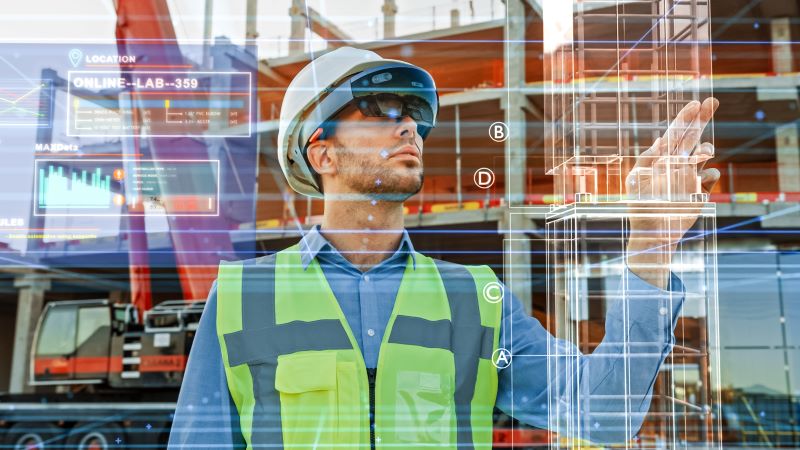
Why Use Virtual Reality (VR) in Construction

Improved Safety Training
Virtual Reality (VR) based simulations enable construction workers to undergo realistic safety training exercises in virtual environments, simulating hazardous scenarios and emergency procedures. This enhances safety awareness, reduces accidents on construction sites, and minimizes risks to personnel.
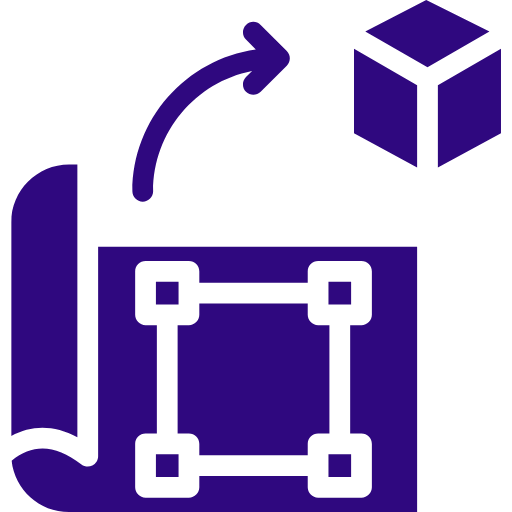
Virtual Prototyping and Mockups
VR enables virtual prototyping and mockups of construction projects, allowing stakeholders to explore design alternatives, test structural integrity, and evaluate aesthetic features in immersive 3D environments. This accelerates the design iteration process and reduces costly revisions during construction?

Training and Skills Development
VR-based training programs provide construction workers with hands-on experience in operating heavy machinery, using construction equipment, and executing specialized tasks. This enhances skills development, improves workforce readiness, and reduces training costs for construction companies.
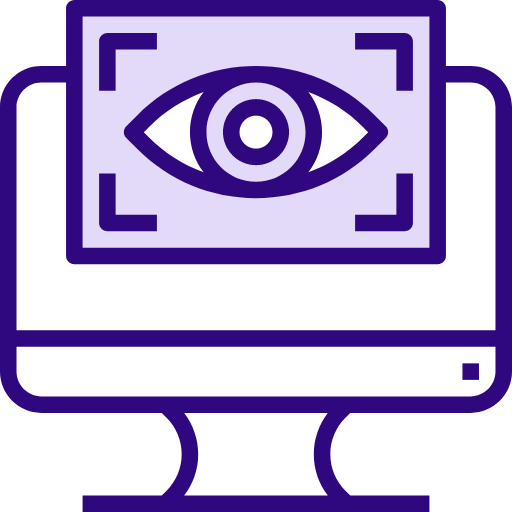
Enhanced Design Visualization
VR allows stakeholders to visualize construction projects in immersive 3D environments, providing a better understanding of spatial layouts, building components, and architectural designs. This helps identify design flaws early in the process and improves collaboration among project teams.
Use Cases
Discover Examples of VR Solutions for Construction
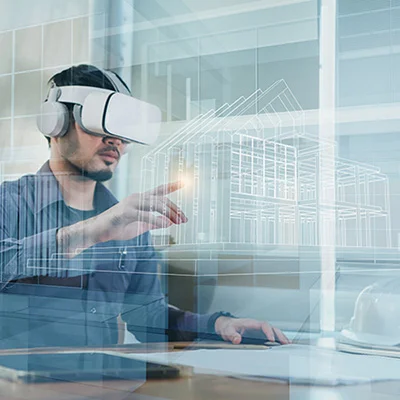
3D Modelling and Design
Virtual Reality (VR) takes the design process to the next level. By creating a realistic digital twin of a proposed construction project, plans can be rigorously examined at the design stage. Being able to walk around a virtual site means that issues can be flagged and addressed at an earlier stage. This can help to minimize costly and time-consuming alterations further down the line significantly.
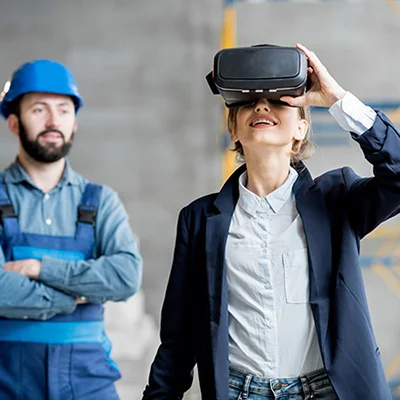
Client Relationship Management
Client relationships can also benefit from Virtual Reality (VR). Creating a virtual completed site before it’s built allows clients to visualize, tour, experience, and scrutinize it from the start of the project. This will help them realize their vision more accurately, as AR and VR helps remove any ambiguities around their expectations and allows adjustments to be made before construction begins.
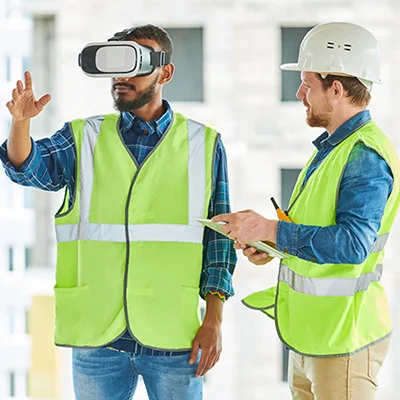
Project Management
One thing that all construction projects have in common is that they rely on collaborative work for the completion of interdependent tasks. But often, these relationships are challenged by fragmented working practices. Virtual Reality (VR) can help to improve communications throughout the project’s lifespan, from sharing the finished vision in minute detail to providing site updates to those unable to visit the site regularly.
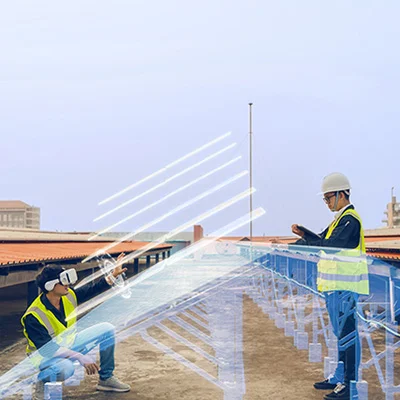
Training
One thing that all construction projects have in common is that they rely on collaborative work for the completion of interdependent tasks. But often, these relationships are challenged by fragmented working practices. Virtual Reality (VR) can help to improve communications throughout the project’s lifespan, from sharing the finished vision in minute detail to providing site updates to those unable to visit the site regularly.
Most Popular Packages for Construction
VR Guru
Heavy Equipment Safety & Operation
Learn and Practice Operating Heavy Equipment in a hands-on VR Training Environment

For 1 user $500.00 - 12 months
View DetailsXennial Digital
Intro to Construction
Navigate a VR Construction Site and Explore Different Career Paths

For 1 user $3,500.00 - 12 months
View Details360 Immersive
Train 360
Immersive VR Safety Training for Construction and General industry Workers

For 5 users $4,500.00 - 12 months
View DetailsVR Guru
Pneumatic Handheld Tools
Pneumatic Tools VR Simulation: Explore and Safely Operate Nail gun, Drill, and Shears

For 1 user $500.00 - 12 months
View DetailsFrequently Asked Questions
What is VR in construction?
Virtual Reality (VR) is a computer-simulated environment that allows you to interact with the environment in a realistic and tactile way. It has a long history in construction, mainly showcasing how a project would look. Today, construction companies are using Virtual Reality (VR) for training and education, as well as in many other areas, such as architectural design, marketing, and gaming.
How to benefit from VR in construction?
A few of the key benefits offered by Virtual Reality (VR) to construction companies are: (1) cutting construction costs and reducing waste, (2) conducting training safely and remotely, (3) speeding up project planning, (4) boosting worker engagement, and (5) presenting and marketing projects with style.
How can VR be used in construction engineering?
A construction engineer is typically a civil engineer overseeing and managing a large-scale, complex construction project. Usually, these projects involve both buildings and the infrastructure that supports them. Construction engineers may collaborate with other engineers and manage building crews to ensure the project is successful. By visualizing construction sites or buildings in Virtual Reality, architects, engineers, and other stakeholders can evaluate a project before it is built. This enables them to make well-founded decisions internally and externally without wasting time and budget. The looks and technical master plans (like HVAC and building materials) can continuously be simulated, evaluated, validated, and improved. Projects designed this way are better thought-through and advance much faster than traditional projects.
Why VR is important in construction industry?
Although the construction industry has improved, it's still in desperate need of modernization and optimization. Most work is hazardous, unattractive, and ineffective for construction workers. Many construction companies are looking for an effective solution to these problems. Virtual Reality can reduce these problems, enhance safety, improve staff productivity, and increase profit. The benefits provided by VR include a highly interactive and super convenient customer experience, effective construction management, risk-free training to gain hands-on experience, a preview of the future outcomes to spot misconceptions at the planning stage, and productive cooperation with clients worldwide using a virtual conference room. You can get these and many more when implementing VR solutions in your construction company.
How Virtual Reality is impacting construction engineering?
A construction engineer is typically a civil engineer overseeing and managing a large-scale, complex construction project. Usually, these projects involve both buildings and the infrastructure that supports them. Construction engineers may collaborate with other engineers and manage building crews to ensure the project is successful. By visualizing construction sites or buildings in Virtual Reality, architects, engineers, and other stakeholders can evaluate a project before it is built. This enables them to make well-founded decisions internally and externally without wasting time and budget. The looks and technical master plans (like HVAC and building materials) can continuously be simulated, evaluated, validated, and improved. Projects designed this way are better thought-through and advance much faster than traditional projects.
What are the ways to use VR in Construction?
Forward-thinking companies are adopting virtual Reality within the construction industry to make a tangible difference in real-world working environments today. Critical uses include (1) Design and 3D modeling that significantly minimize costly and time-consuming alterations by allowing issues to be flagged and addressed at an earlier stage; (2) VR Tours to improve communication with clients by allowing clients to not only visualize but tour, experience, and scrutinize a site from the very start of the project; (3) Supporting collaborative working by improving communications throughout the project’s lifespan, from sharing the finished vision in minute detail to providing site updates to those unable to visit the site regularly; and (4) Enhancing training by offering immersive learning experiences to give employees a chance to get hands-on and practical experience in a safe, risk-free environment. From health & safety training to training in intricate technical tasks, Virtual Reality can help hone skills, boost performance and improve collaborative working practices.
How VR is helping in safety and training for construction?
Working in a construction environment can be hazardous, and having a highly trained and proficient workforce is the key to minimizing safety risks. But a dangerous environment isn’t ideal for people to learn essential skills, especially when undertaking high-risk tasks. That’s where Virtual Reality (VR) can make a tangible difference. Workplaces and tasks can be replicated in a realistic virtual space, where employees can have a hands-on training experience in a safe environment. This means they can make risk-free mistakes and hone their skills through practice.
How VR is used to reduce labor cost in construction?
VR provides an opportunity to preview future outcomes, thus significantly reducing reworks, development time, and costs. Before starting project development, clients can view a 3D prototype with all the needed details from every angle. This opportunity enables the detection of misconceptions in the initial stage and provides quick feedback, resulting in less rework and completing projects on time and within budget. Virtual reality training can also help lower a company’s training budget without compromising quality and effectiveness.
How does VR help in construction?
Virtual Reality (VR) can help overcome many challenges in the construction industry. Virtual Reality can help: (1) save time and money by allowing a better pre-planning stage, where it is possible to explore a 3D model in VR, and you can reduce rework associated with issues that are hard to predict or arise from misunderstandings; (2) improve training safety by allowing workers to make as many mistakes as they need to master dangerous equipment without getting hurt or damaging the machinery; (3) enhance collaboration by allowing members of a project team located in different locations to gather in a virtual conference room to discuss any critical questions; (4) allow for better timeliness because there are fewer alterations and thanks to VR streaming via 3D cameras, managers can monitor the building process more effectively; and (5) increase quality because of the spatial experience offered by Virtual Reality leads to better decision-making; therefore, there are almost no misinterpretations, the quality instantly goes up, and the number of “redo” requests drops significantly.
How is VR being used in construction?
Forward-thinking companies are adopting virtual Reality within the construction industry to make a tangible difference in real-world working environments today. Critical uses include (1) Design and 3D modeling that significantly minimize costly and time-consuming alterations by allowing issues to be flagged and addressed at an earlier stage; (2) VR Tours to improve communication with clients by allowing clients to not only visualize but tour, experience, and scrutinize a site from the very start of the project; (3) Supporting collaborative working by improving communications throughout the project’s lifespan, from sharing the finished vision in minute detail to providing site updates to those unable to visit the site regularly; and (4) Enhancing training by offering immersive learning experiences to give employees a chance to get hands-on and practical experience in a safe, risk-free environment. From health & safety training to training in intricate technical tasks, virtual reality can help hone skills, boost performance and improve collaborative working practices.
How is VR in construction shaping the industry?
Virtual Reality (VR) can help overcome many challenges in the construction industry. Virtual Reality can: (1) save time and money by allowing a better pre-planning stage, where it is possible to explore a 3D model in VR, and you can reduce rework associated with issues that are hard to predict or arise from misunderstandings; (2) improve training safety by allowing workers to make as many mistakes as they need to master dangerous equipment without getting hurt or damaging the machinery; (3) enhance collaboration by allowing members of a project team located in different locations to gather in a virtual conference room to discuss any critical questions; (4) allow for better timeliness because there are fewer alterations and thanks to VR streaming via 3D cameras, managers can monitor the building process more effectively; and (5) increase quality because of the spatial experience offered by Virtual Reality leads to better decision-making; therefore, there are almost no misinterpretations, the quality instantly goes up, and the number of “redo” requests drops significantly.
How VR helps to reduce time in construction?
Virtual Reality (VR) provides an opportunity to preview future outcomes, thus significantly reducing reworks, development time, and costs. Before starting project development, clients can view a 3D prototype with all the needed details from every angle. This opportunity enables the detection of misconceptions in the initial stage and provides quick feedback, resulting in less rework and completing projects on time and within budget.
Why use VR training technology in the construction industry?
Although the construction industry has improved significantly, it's still in need of transformation and optimization. Most work is hazardous, unattractive, and ineffective for construction workers. Many construction companies are looking for an effective solution to these problems. Virtual Reality (VR) is an innovative tool that can help build the construction industry's future. It has become the latest trend in construction because it can help with design, modeling, and other processes in the construction industry. VR can be used for training and education and in many other areas, such as architectural design, marketing, and gaming. In addition, the Construction Industry Training Board’s (CITB) “A New Reality: Immersive Learning in Construction” Report highlights that modernizing the construction industry is critical to its survival and that embracing immersive technology like VR is key to the future of skills development and talent retention within the sector.
How can VR be a new transformation in construction?
Over the last few years, Virtual Reality (VR) has moved from a gimmick to a valuable tool in the construction industry. Virtual reality was first used in construction to demonstrate blueprints for a building. Today, it is used in many other areas, such as architectural design, marketing, gaming, training, and education.
How is Virtual Reality revolutionizing the construction industry?
Virtual Reality (VR) has enormous potential for the construction industry. This technology has already transformed how construction businesses operate and will continue modernizing it. The advantages include a highly interactive and super convenient customer experience, effective construction management, risk-free training to gain hands-on experience, a preview of the future outcomes to spot misconceptions at the planning stage, and productive cooperation with clients worldwide using a virtual conference room. You can get these and many more when implementing VR into your construction company.
Is VR the future of construction?
Over the past few years, there have been significant leaps forward in immersive technology. VR hardware has become more widely available and affordable. This is coupled with advances in software that can realistically reproduce working environments and tasks; crucially, it creates a collaborative virtual space where people can work, learn, and explore together. Virtual reality isn’t just a technology for tomorrow; forward-thinking companies are already adopting it within the construction industry to make a tangible difference in real-world working environments today.
How Virtual Reality will change the construction industry?
Virtual Reality is no longer just for gaming. VR has begun to spread into almost every industry you can think of as more possible applications become known or invented. The construction industry is certainly no exception. In the coming decades, construction may change completely to make way for the time-saving and money-saving benefits VR offers. Virtual Reality can offer an engaging, immersive experience that can be extremely helpful in industries like construction. In fact, construction may be the industry that experiences the most significant change from using Virtual Reality. There are current methods of 3D modeling that are being used; Virtual Reality has the potential to take 3D modeling to the next level by making 3D models something that you could walk in and explore, allowing developers to interact with the design, see it up close and make changes that they can check in real-time. Seeing a build in 3D through Virtual Reality means that builders can create better construction projects and spot problems before construction begins. This will save both time and money for builders and potential customers asking for the build. There are some pretty significant benefits to Virtual Reality as it stands today, but there is the potential for things to change hugely in the coming decades. What is possible now may seem like a drop in the bucket compared to what is coming with the pairing of Virtual Reality and the construction industry.
How effective is VR technology in the construction industry?
Virtual Reality (VR) has enormous potential for the construction industry. This technology has already transformed how construction businesses operate and will continue modernizing it. The advantages include a highly interactive and super convenient customer experience, effective construction management, risk-free training to gain hands-on experience, a preview of the future outcomes to spot misconceptions at the planning stage, and productive cooperation with clients worldwide using a virtual conference room. You can get these and many more when implementing VR into your construction company.
How BIM and VR in construction are boosting the industry?
BIM systems, which store all project information centrally and provide models that can be worked on by any team member, alleviate the challenges that inevitably occur from various specialists working with different information. Regardless of how the data is represented, changes are reflected in everyone’s models. Multiple team members can work with a 3D model simultaneously since changes, notes, and queries are reflected in real time for everyone working on the project. This helps streamline communication and ensures that everyone is on the same page. VR takes BIM to the next level, making its models more immersive and interactive. More precisely, now you can put your clients into a construction project as though it is finished and ready. By virtue of a virtual representation, people can walk around a building that has yet to be constructed. This opportunity provides a clear picture of the site; clients and construction workers are on the same page, avoiding rework. Stakeholders can view every nook and cranny to find any misconceptions early so they won’t pay twice for mistakes in the future. The combination of BIM and VR takes your construction management to the next level.
How VR benefits the construction industry?
Virtual Reality (VR) can help overcome many challenges in the construction industry. Virtual Reality can: (1) save time and money by allowing a better pre-planning stage, where it is possible to explore a 3D model in VR, and you can reduce rework associated with issues that are hard to predict or arise from misunderstandings; (2) improve training safety by allowing workers to make as many mistakes as they need to master dangerous equipment without getting hurt or damaging the machinery; (3) enhance collaboration by allowing members of a project team located in different locations to gather in a virtual conference room to discuss any critical questions; (4) allow for better timeliness because there are fewer alterations and thanks to VR streaming via 3D cameras, managers can monitor the building process more effectively; and (5) increase quality because of the spatial experience offered by Virtual Reality leads to better decision-making; therefore, there are almost no misinterpretations, the quality instantly goes up, and the number of “redo” requests drops significantly.
Why should I opt VR in construction?
Virtual Reality (VR) is an innovative tool that can help build the construction industry's future. Embracing new technologies is crucial to the construction industry as it looks to modernize working practices and address new and complex challenges. Virtual Reality offers a breadth of opportunities in design and communication, as well as in the training and development of the next generation of construction professionals.
How can Virtual Reality make construction workplace safety safer?
According to research, by 2030, 23 million jobs will be set to use virtual reality staff training programs. And the construction industry is no exception since it's known for being hazardous. Virtual reality in construction training helps provide a safe and risk-free working environment. VR training simulators enable construction workers to simulate complex and dangerous real-life scenarios and operate hazardous equipment without risks. Thanks to VR technology, workers are ready for emergencies like breaks, fires, or working in bad weather conditions and know how to act effectively.
How beneficial it is to embrace VR for construction?
Although the construction industry has improved, it's still in desperate need of modernization and optimization. Most work is hazardous, unattractive, and ineffective for construction workers. Many construction companies are looking for an effective solution to these problems. Virtual Reality can reduce these problems, enhance safety, improve staff productivity, and increase profit. The benefits provided by VR include a highly interactive and super convenient customer experience, effective construction management, risk-free training to gain hands-on experience, a preview of the future outcomes to spot misconceptions at the planning stage, and productive cooperation with clients worldwide using a virtual conference room. You can get these and many more when implementing VR solutions in your construction company.
What is Virtual Reality (VR) in Construction?
Virtual Reality (VR) is a computer-simulated environment that allows you to interact with the environment in a realistic and tactile way. It has a long history in construction, mainly showcasing how a project would look. Today, construction companies are using Virtual Reality (VR) for training and education, as well as in many other areas, such as architectural design, marketing, and gaming.
What are the key Virtual Reality in the construction industry drivers?
Although the construction industry has improved, it still desperately needs modernization and optimization. As the industry expands, millennials are flocking to it, while the older generation is considering retiring. However, most work remains hazardous, unattractive, and ineffective for construction workers. Many construction companies are looking for an effective solution to these problems. Virtual Reality can reduce these problems, enhance safety, improve staff productivity, and increase profit.
How VR is helpful in training construction engineers?
Many people graduate from school with degrees in engineering or architecture despite never having worked on a construction site. Many of them have never even seen one up close. Virtual Reality can change that. Imagine how much more understanding and experience an engineer or architect can bring to a job if they have experience working with their designs in the virtual world before they graduate. In addition, people will learn to do dangerous jobs and operate hazardous equipment in a safe environment where mistakes do not have the potential to cost a life. Virtual Reality (VR) has been rapidly recognized and implemented in construction engineering education and training (CEET) in recent years due to its benefits of providing an engaging and immersive environment.
How VR applications are helpful in safety and training in construction sectors?
Construction companies can use Virtual Reality to train their employees. Operators of machinery can begin training in a controlled environment before the job site is even ready, whether they’ve never used the machine before or need a refresher. Operators learn to use their tools in a 3D environment created by training simulators. Trainees also receive experience making quick judgments and dealing with unforeseen issues in real time, with little risk of physical harm. This increases operators’ proficiency before operating the machinery in real life, resulting in lower safety risks and less damage to equipment. Another advantage of VR is improved safety. Fewer accidents and a safer environment result from better planning. Furthermore, Virtual Reality allows some equipment to be operated remotely, reducing risk by reducing the number of personnel on-site. Remote access to the VR environment enables operators to control their machines while remaining protected from the elements.
Why choose VR for construction?
Virtual Reality (VR) is an innovative tool that can help build the construction industry's future. Embracing new technologies is crucial to the construction industry as it looks to modernize working practices and address new and complex challenges. Virtual Reality offers a breadth of opportunities in design and communication, as well as in the training and development of the next generation of construction professionals.
Is Virtual Reality the future of construction safety training?
As the construction industry relies on the skills and talent of its workforce, creating virtual workplaces to learn in safely, immersive technologies can offer a fantastic foundation for the future of real-world construction projects. VR training experiences can provide practical solutions to the essential skills needs of the sector, from health & safety to practical skills development, to minimize human error and improve the performance of technical tasks. And that’s a future we can all work together on to build.
Is Virtual Reality the future of the construction industry?
The future of Virtual Reality in construction is uncertain but only from the perspective that it is impossible to predict just how far Virtual Reality will bring the construction industry. There is no doubt that Virtual Reality will make a huge difference in construction; it is just that no one knows how far the technology will take us. It is very likely that in the near future, Virtual Reality will be the standard by which all construction projects are conceived and built. A construction project will be started or finalized once it has been built in a virtual space first.
Can Virtual Reality improve construction design intents?
Virtual Reality (VR) takes the design process to the next level. By creating a realistic digital twin of a proposed construction project, plans can be rigorously examined at the design stage. Being able to walk around a virtual site means that issues can be flagged and addressed at an earlier stage. This can help to minimize costly and time-consuming alterations further down the line significantly.
What is the relationship between VR and BIM in construction?
Building Information Modelling, BIM, has increased communication and collaboration in design for years. The problem is that BIM has been primarily available to design professionals. VR is a tool available to communicate BIM clearly to everyone involved in the project and make sure they fully understand the challenges the project is facing. This makes it a vital part of the solution for communication between BIM experts and inexperienced stakeholders and decision-makers. VR is the tool to democratize BIM for everyone, not just design professionals and specialists. BIM models and VR technologies can merge into a more interactive, immersive, and detailed virtual representation of a construction project. You can literally walk into a building that is yet to be erected.
Is VR the future of the construction industry?
The future of Virtual Reality (VR) in construction is uncertain but only from the perspective that it is impossible to predict just how far VR will bring the construction industry. There is no doubt that Virtual Reality will make a huge difference in construction; it is just that no one knows how far the technology will take us. In the near future, Virtual Reality will likely be the standard by which all construction projects are conceived and built. A construction project will be started or finalized once it has been built in a virtual space first. How VR applications are helpful in safety and training in construction sectors?
Working in a construction environment can be hazardous, and having a highly trained and proficient workforce is the key to minimizing safety risks. But a dangerous environment isn’t ideal for people to learn essential skills, especially when undertaking high-risk tasks. That’s where Virtual Reality (VR) can make a tangible difference. Workplaces and tasks can be replicated in a realistic virtual space, where employees can have a hands-on training experience in a safe environment. This means they can make risk-free mistakes and hone their skills through practice.
Why do I prefer VR construction over traditional construction?
The building industry has remained traditional in terms of how work is completed. Things are changing, though, with the implementation of Virtual Reality. Virtual Reality (VR) has become the latest trend in construction because it offers so much potential. It can help with design, modeling, and other processes in the construction industry. The benefits provided by Virtual Reality in training, marketing, and planning are evident; it can also increase productivity and worker safety by offering insights that traditional approaches cannot.
Why integrate VR into construction?
All construction projects involve different numbers of people collaborating to complete tasks correctly. However, this collaboration can be complicated for international partnerships, or construction workers can work at different times or remotely. Implementation of Virtual Reality (VR) in construction helps avoid communication issues. VR technology allows participants worldwide to meet virtually, coordinate projects, check for updates, spot issues, and make changes. Using VR helps ensure a more transparent project development process and highly productive cooperation.
How will Virtual Reality impact the construction industry?
Virtual Reality (VR) can help overcome many challenges in the construction industry. Virtual Reality can: (1) save time and money by allowing a better pre-planning stage, where it is possible to explore a 3D model in VR, and you can reduce rework associated with issues that are hard to predict or arise from misunderstandings; (2) improve training safety by allowing workers to make as many mistakes as they need to master dangerous equipment without getting hurt or damaging the machinery; (3) enhance collaboration by allowing members of a project team located in different locations to gather in a virtual conference room to discuss any critical questions; (4) allow for better timeliness because there are fewer alterations and thanks to VR streaming via 3D cameras, managers can monitor the building process more effectively; and (5) increase quality because of the spatial experience offered by Virtual Reality leads to better decision-making; therefore, there are almost no misinterpretations, the quality instantly goes up, and the number of “redo” requests drops significantly.
How is VR being used in the construction industry?
Forward-thinking companies are adopting Virtual Reality within the construction industry to make a tangible difference in real-world working environments today. Critical uses include (1) Design and 3D modeling that significantly minimize costly and time-consuming alterations by allowing issues to be flagged and addressed at an earlier stage; (2) Virtual tours to improve communication with clients by allowing clients to not only visualize but tour, experience, and scrutinize a site from the very start of the project; (3) Supporting collaborative working by improving communications throughout the project’s lifespan, from sharing the finished vision in minute detail to providing site updates to those unable to visit the site regularly; and (4) Enhancing training by offering immersive learning experiences to give employees a chance to get hands-on and practical experience in a safe, risk-free environment. From health & safety training to training in intricate technical tasks, Virtual Reality can help hone skills, boost performance and improve collaborative working practices.
Why should I opt for VR in construction?
Virtual Reality (VR) is an innovative tool that can help build the construction industry's future. Embracing new technologies is crucial to the construction industry as it looks to modernize working practices and address new and complex challenges. Virtual Reality offers a breadth of opportunities in design and communication, as well as in the training and development of the next generation of construction professionals.
What is Virtual Reality (VR) in construction?
Virtual Reality technology is an umbrella term for Augmented Reality (AR) and Virtual Reality (VR). Virtual Reality (VR) has become the latest trend in construction because it offers so much potential. It can help with design, modeling, and other processes in the construction industry. The benefits provided by Virtual Reality in training, marketing, and planning are evident; it can also increase productivity and worker safety by offering insights that traditional approaches cannot.
Is Virtual Reality the future of construction safety training?
As the construction industry relies on the skills and talent of its workforce, creating virtual workplaces to learn in safely, immersive technologies can offer a fantastic foundation for the future of real-world construction projects. Virtual Reality (VR) training experiences can provide practical solutions to the essential skills needs of the sector, from health & safety to practical skills development, to minimize human error and improve the performance of technical tasks. And that’s a future we can all work together on to build.
Can Virtual Reality improve construction design intents?
Virtual Reality (VR) takes the design process to the next level. By creating a realistic digital twin of a proposed construction project, plans can be rigorously examined at the design stage. Being able to walk around a virtual site means that issues can be flagged and addressed at an earlier stage. This can help to minimize costly and time-consuming alterations further down the line significantly. How VR is transforming construction?
Virtual Reality (VR) has enormous potential for the construction industry. This technology has already transformed how construction businesses operate and will continue modernizing it. The advantages include a highly interactive and super convenient customer experience, effective construction management, risk-free training to gain hands-on experience, a preview of the future outcomes to spot misconceptions at the planning stage, and productive cooperation with clients worldwide using a virtual conference room. You can get these and many more when implementing VR into your construction company.
What is the purpose of Virtual Reality in construction?
Although the construction industry has improved, it's still in desperate need of modernization and optimization. Most work is hazardous, unattractive, and ineffective for construction workers. Many construction companies are looking for an effective solution to these problems. Virtual Reality can reduce these problems, enhance safety, improve staff productivity, and increase profit. The benefits provided by VR include a highly interactive and super convenient customer experience, effective construction management, risk-free training to gain hands-on experience, a preview of the future outcomes to spot misconceptions at the planning stage, and productive cooperation with clients worldwide using a virtual conference room. You can get these and many more when implementing VR solutions in your construction company.
What is the future of Virtual Reality in construction?
The future of Virtual Reality in construction is uncertain but only from the perspective that it is impossible to predict how far VR will bring the construction industry. There is no doubt that Virtual Reality will make a huge difference in construction; it is just that no one knows how far the technology will take us. In the near future, Virtual Reality will likely be the standard by which all construction projects are conceived and built. A construction project will be started or finalized once it has been built in a virtual space first.
What is the difference between VR and VR in the construction industry?
Virtual Reality technology is an umbrella term for Augmented Reality (AR) and Virtual Reality (VR). Virtual Reality (VR) has become the latest trend in construction because it offers so much potential. It can help with design, modeling, and other processes in the construction industry. The benefits provided by Virtual Reality in training, marketing, and planning are evident; it can also increase productivity and worker safety by offering insights that traditional approaches cannot.
What is Virtual Reality and how does it help workers?
Virtual Reality technology is an umbrella term for Augmented Reality (AR) and Virtual Reality (VR). One of the critical areas where immersive technology, such as VR, is making a real impact is in construction VR training. Immersive learning experiences allow employees to get hands-on and practical experience in a safe, risk-free environment. From health & safety training to training in intricate technical tasks, Virtual Reality can help to hone skills, boost performance and improve collaborative working practices. For job-related training, 70% of what people learn is experiential, compared with 10% through formal learning. Learning by doing, repeating exercises, and getting immediate feedback on performance, practice-based VR experiences can make a tangible difference in ensuring the right skills are learned and that knowledge is retained and applied in the workplace.
What is a key factor in the accelerated use of Virtual Reality in construction?
The Construction Industry Training Board’s (CITB) “A New Reality: Immersive Learning in Construction” Report highlights that modernizing the construction industry is critical to its survival and that embracing immersive tech is key to the future of skills development and talent retention within the sector. Immersive technologies, such as Virtual Reality (VR), have the potential to revolutionize training, and the benefits of integrating VR into training programs offer a solid business case to those considering improving their operation.
How VR helps in the training of construction engineers?
Many people graduate from school with degrees in engineering or architecture despite never having worked on a construction site. Many of them have never even seen one up close. Virtual Reality can change that. Imagine how much more understanding and experience an engineer or architect can bring to a job if they have experience working with their designs in the virtual world before they graduate. In addition, people will learn to do dangerous jobs and operate hazardous equipment in a safe environment where mistakes do not have the potential to cost a life. Virtual Reality (VR) has been rapidly recognized and implemented in construction engineering education and training (CEET) in recent years due to its benefits of providing an engaging and immersive environment.



